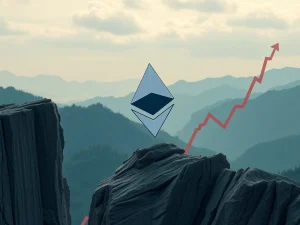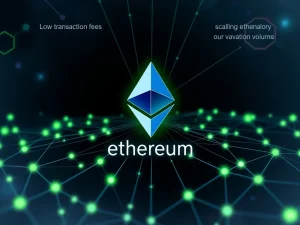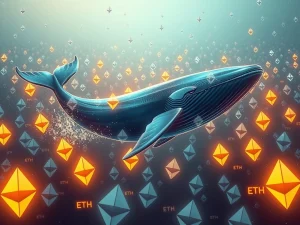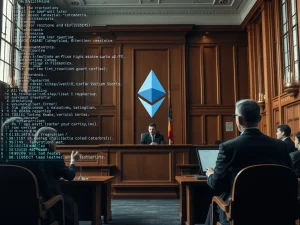Urgent Update: EigenLayer’s Crucial Slashing Mechanism Goes Live in April
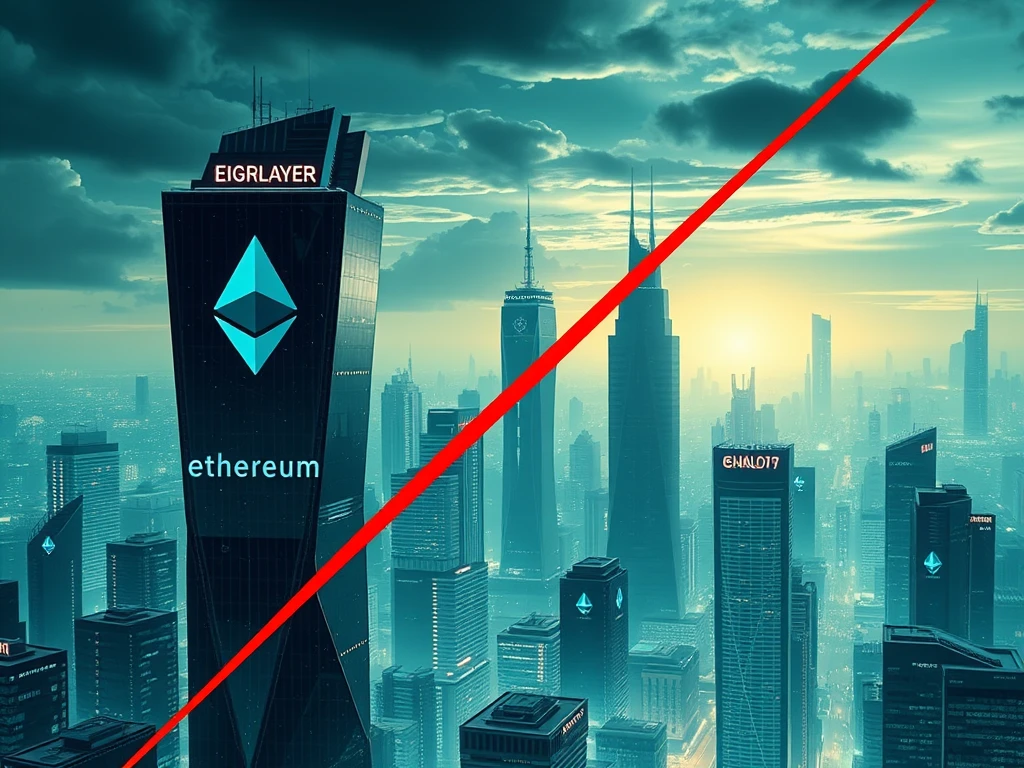
Get ready for a significant shift in the EigenLayer ecosystem! The highly anticipated ‘slashing’ mechanism is set to launch this April, marking a pivotal moment for Ethereum restaking and the broader landscape of decentralized security. This update, scheduled for April 17th, is not just another feature release; it’s the final piece in EigenLayer’s puzzle to fully realize its restaking model. Are you prepared for how this groundbreaking change will impact restakers and the future of verifiable decentralized services?
What is EigenLayer Slashing and Why Does It Matter?
At its core, EigenLayer slashing is a security measure. Think of it as a crucial accountability system for node operators within the EigenLayer network. But what exactly does ‘slashing’ mean in this context? In simple terms, slashing is the process of penalizing node operators and restakers for failing to meet certain performance standards or for engaging in malicious activities. This penalty typically involves the loss of a portion of their staked or restaked cryptocurrency.
Why is this so important? Because slashing is fundamental to the security and integrity of proof-of-stake (PoS) and restaking protocols. It ensures that everyone playing a role in securing the network – from Ethereum itself to EigenLayer and the AVSs it supports – has a strong incentive to act honestly and efficiently. Without slashing, the entire system could be vulnerable to bad actors and inefficiencies.
The Journey to Mainnet Slashing: A Gradual Rollout
EigenLayer hasn’t rushed into implementing EigenLayer mainnet slashing. The protocol has taken a measured, phased approach, starting with testnets. This careful rollout has allowed for thorough testing and refinement of the slashing mechanism before its deployment on the mainnet.
Here’s a breakdown of the gradual rollout process:
- Testnet Phase: Slashing was initially implemented and rigorously tested in EigenLayer’s testnet environments. This phase was crucial for identifying and resolving potential issues before impacting real funds.
- Voluntary Opt-in: Upon mainnet launch on April 17th, slashing will not be immediately enforced across the board. Instead, node operators and restakers will have the option to voluntarily “opt-in.” This gradual transition provides users with the flexibility to understand and adapt to the new mechanism at their own pace.
- Full Implementation: Over time, as more users become comfortable and opt-in, EigenLayer aims for full implementation of slashing, establishing it as a core security feature of the protocol.
This phased approach minimizes disruption and allows the EigenLayer community to progressively embrace slashing as an integral part of the ecosystem.
Understanding Ethereum Restaking and its Risks
To fully grasp the significance of slashing, it’s essential to understand Ethereum restaking. Restaking is an innovative concept introduced by EigenLayer that allows users who have already staked their Ether (ETH) in Ethereum’s proof-of-stake consensus mechanism to ‘re-stake’ those same tokens in EigenLayer. This restaking process enables these staked ETH to simultaneously secure other protocols, known as Actively Validated Services (AVSs), beyond just the Ethereum network itself.
While restaking offers potential benefits like increased rewards and enhanced capital efficiency, it also introduces new layers of complexity and, importantly, restaking risks. Here’s a closer look at some key considerations:
- Increased Complexity: Restaking adds a layer of complexity to the already intricate world of crypto staking. Users need to understand not only Ethereum staking but also the mechanics of EigenLayer and the specific AVSs they are securing.
- Smart Contract Risks: Like any DeFi protocol, EigenLayer and AVSs are built on smart contracts. These contracts, while powerful, are not immune to vulnerabilities. Bugs or exploits in these contracts could lead to loss of funds.
- Slashing Risks: With the introduction of slashing, restakers now face the risk of penalties not just from Ethereum, but also from EigenLayer and potentially from the AVSs they are securing. Misbehavior or poor performance related to any of these layers could result in slashing.
- AVS Performance Risks: The performance and security of AVSs themselves are crucial. If an AVS experiences issues or is compromised, it could indirectly impact restakers.
It’s crucial for anyone considering Ethereum restaking to thoroughly research and understand these risks before participating.
The EIGEN Token and the Future of EigenLayer
The EIGEN token plays a vital role in the EigenLayer ecosystem. Introduced in 2024, the EIGEN token serves as a reward mechanism to incentivize restakers and node operators. While specific details about the tokenomics and utility of EIGEN are still evolving, it is clear that it is designed to foster participation and growth within the EigenLayer network.
EigenLayer’s vision extends beyond just securing DeFi protocols. Founder Sreeram Kannan has emphasized a strategic “inside-out approach.” Initially, EigenLayer is prioritizing crypto-native applications, focusing on high-throughput consumer apps like DeFi and gaming. However, the long-term goal is to expand beyond Web3 and target broader consumer markets, potentially bringing the benefits of verifiable decentralized services to a much wider audience.
With the implementation of slashing and the ongoing development of its ecosystem, EigenLayer is positioning itself as a critical infrastructure layer for the next generation of the internet. The protocol aims to create a “free marketplace” where node operators can earn rewards for their services and AVSs can launch verifiable services efficiently and securely.
Key Takeaways: Navigating the New EigenLayer Landscape
The introduction of slashing on EigenLayer mainnet is a significant step forward for the protocol and the broader restaking ecosystem. Here are some crucial takeaways:
- Enhanced Security: Slashing is designed to bolster the security and reliability of EigenLayer and the AVSs it supports.
- Increased Accountability: Node operators and restakers are now held to a higher standard of performance and behavior.
- Gradual Transition: The voluntary opt-in approach to slashing allows for a smooth and user-friendly transition.
- Growing Ecosystem: With over 30 AVSs already live and more in development, the EigenLayer ecosystem is rapidly expanding, offering diverse opportunities and applications.
- Long-Term Vision: EigenLayer’s ambition to move beyond crypto-native apps and into mainstream consumer markets signals a potentially transformative impact on the future of decentralized services.
As EigenLayer moves into this new phase with mainnet slashing, it’s crucial for participants to stay informed, understand the risks and opportunities, and adapt to the evolving dynamics of this innovative protocol. The future of verifiable decentralized services is unfolding, and EigenLayer is at the forefront of this exciting development.

